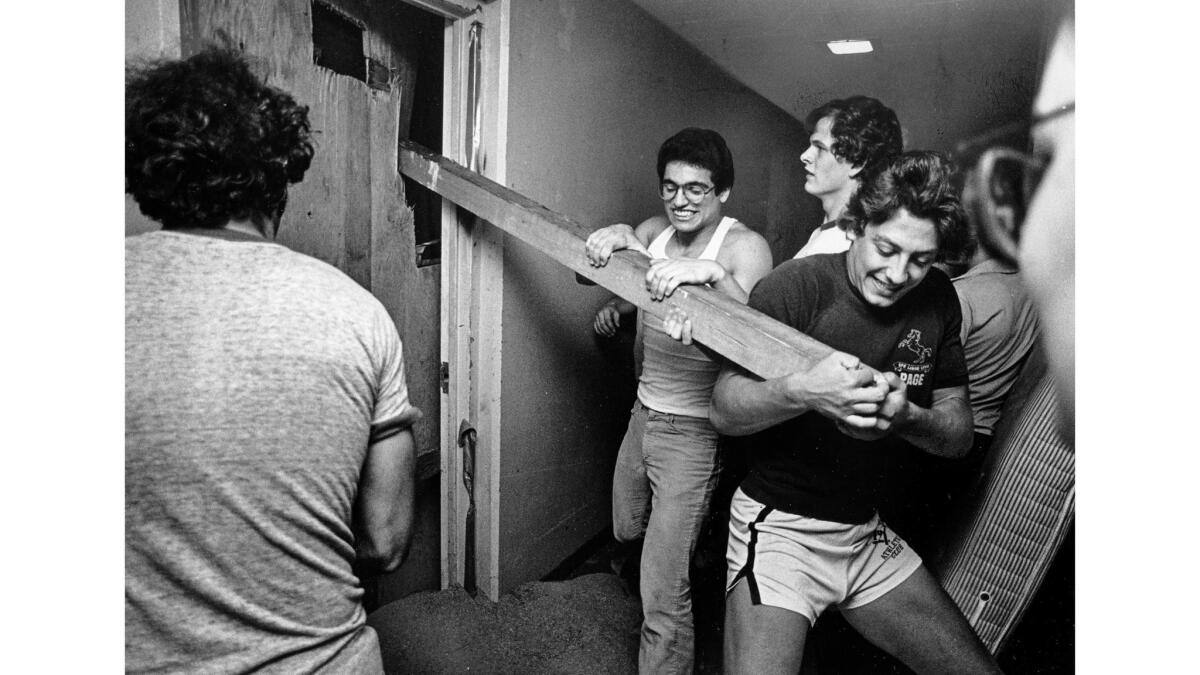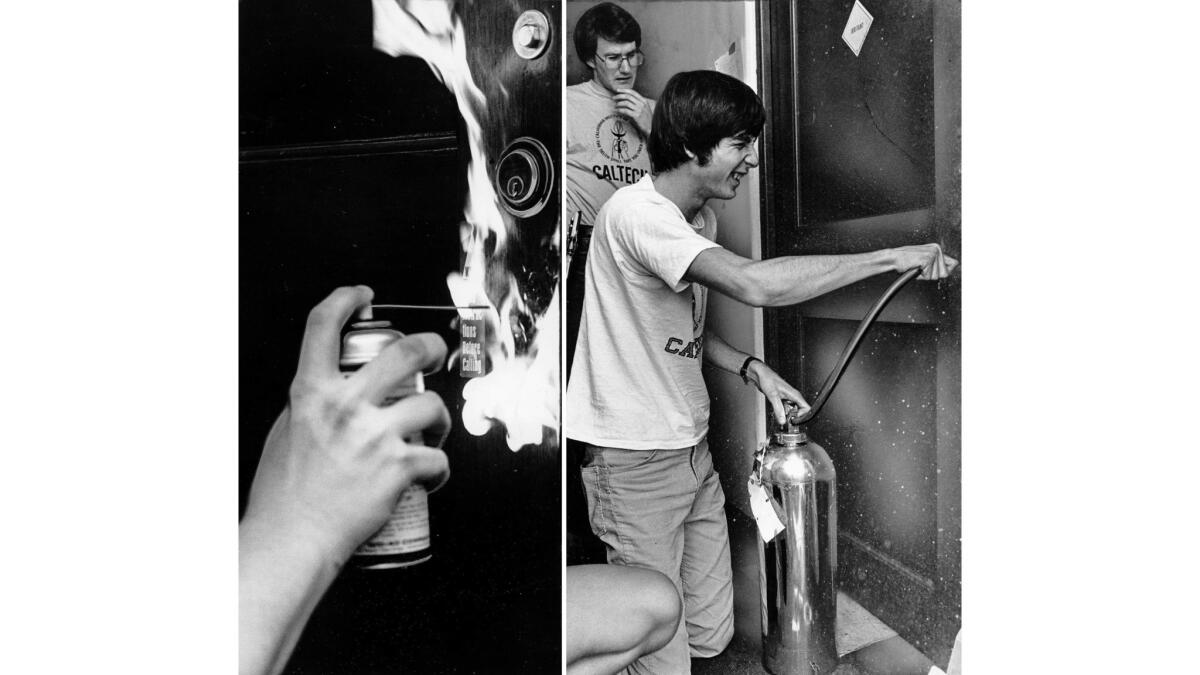From the Archives: Caltech 1979 Senior Ditch Day

One day each spring, Caltech seniors skip classes and vanish. Before leaving, the seniors secure their dorm rooms to keep underclassmen out.
Science writer George Alexander explained Ditch Day in the May 19, 1979, Los Angeles Times:
Chris Lee stumped his fellow students with a musical lock and Barbara Hsu’s little white mouse was in constant danger of being fed to death. Even Aristotle The Snake got a workout.
It was “Ditch Day” on the Caltech campus Friday, the traditional day when seniors cut classes and slip away from the campus for 10 or 12 hours, but not before barricading their dormitory rooms as a challenge to the ingenuity–and frequently the muscle–of the school’s juniors, sophomores and freshmen.
The object of Ditch Day, for the seniors at least, is to throw up obstacles at the entrance to their rooms that no amount of brawn or brain can penetrate. For the underclassmen, the object is the inverse.
To bar their doors and windows from the onslaughts of the “wimps,” as the underclassmen are frequently addressed, the seniors may use any of the three different kinds of “stacks,” a Caltech euphemism for “locks”:
–Brute Force. First perfected by the drawbridge-builders and moat-diggers of the 16th Century and not improved upon since, this technique relies on the placement of large quantities of plywood, steel bars, aluminum plate, concrete slabs and bracing to secure the room.
–Finesse. Here, the emphasis is mental rather than muscular. A wide range of chemical, biological, acoustic, optical and electro-mechanical devices are connected to a door-opening mechanism and left out in the hallway. Anyone who can figure out how the system works can then activate it to open the door.
–Honor. The door is left unlocked, but bears a riddle or thorny problem that must be solved before it can be legitimately opened. The opener must write down his or her solution to the problem and sign the answer before entering.
If and when a stack is broken and the underclass hordes sweep into the room, they usually find cakes, cookies, soft drinks, or a jug of wine waiting for them, a bribe to leave the interior of the room undisturbed. It is the prerogative of the breakers-and-enterers, however, to “trash”–mess up–the room, as well as to readjust the stack and so prevent the returning senior from gaining access to his or her own room at the end of the day.
Brute Force and Finesse stacks were everywhere in evidence Friday in the half-dozen or so undergraduate residence halls of the Caltech campus in Pasadena. …
The Caltech Ditch Day tradition continues, but brute force entry has given way to complex scavenger hunts, mazes, puzzles and other mental challenges.
These photos by Bill Varie appeared in the May 19, 1979, Los Angeles Times.



See more from the Los Angeles Times archives here
More to Read
Start your day right
Sign up for Essential California for news, features and recommendations from the L.A. Times and beyond in your inbox six days a week.
You may occasionally receive promotional content from the Los Angeles Times.






